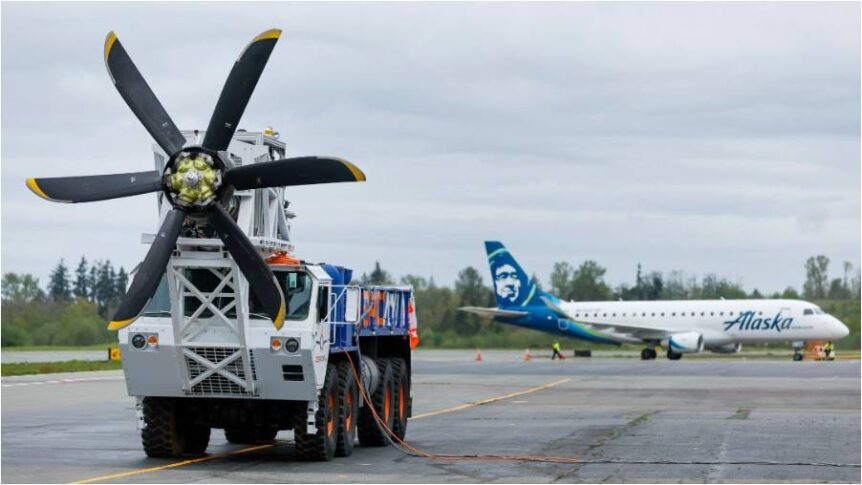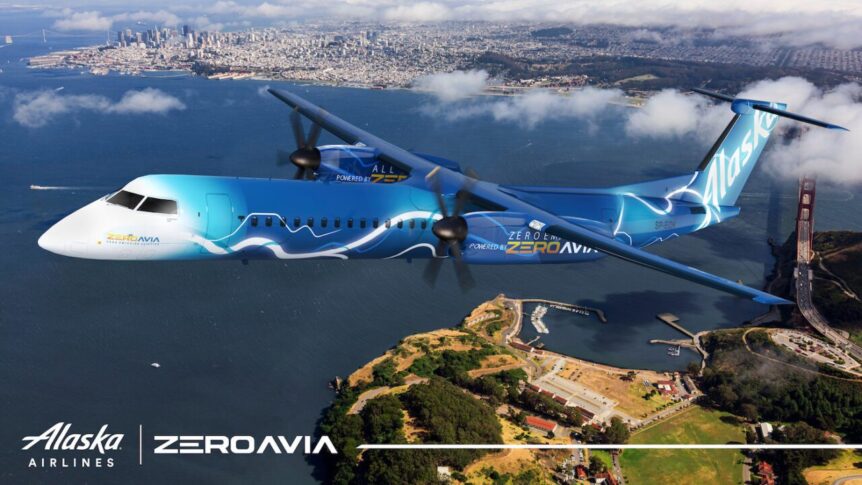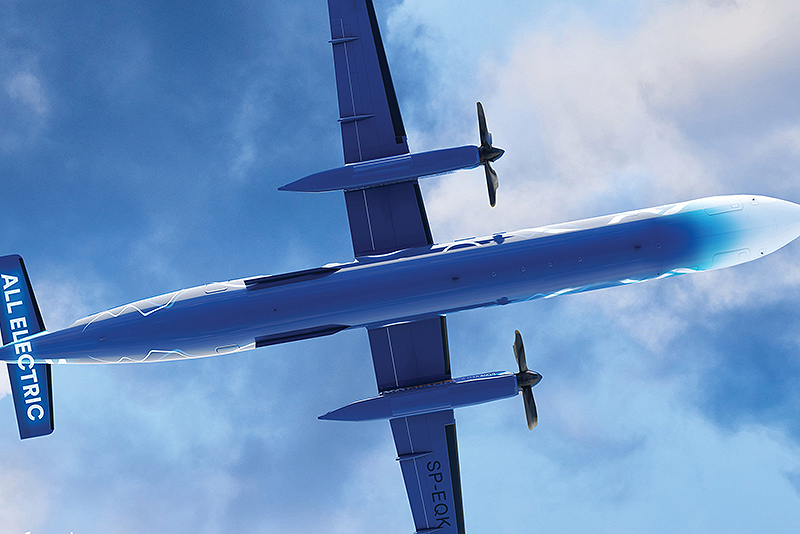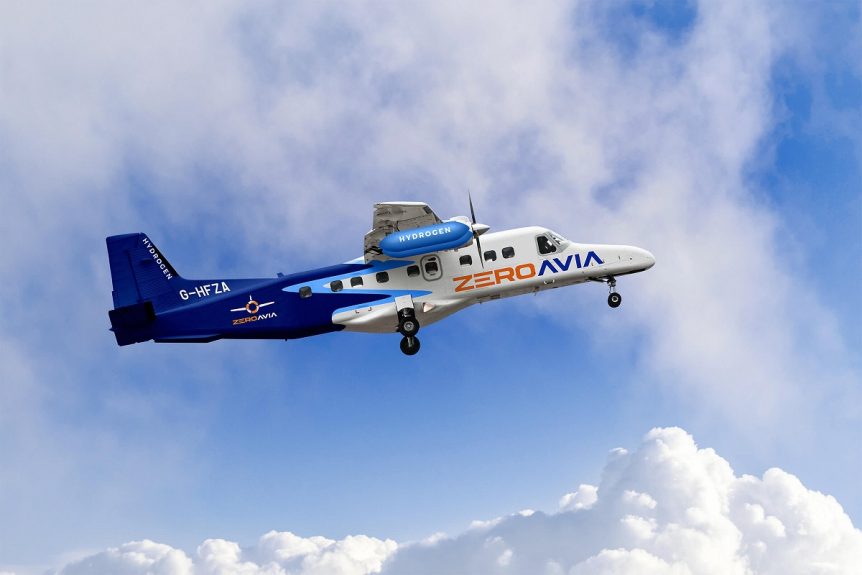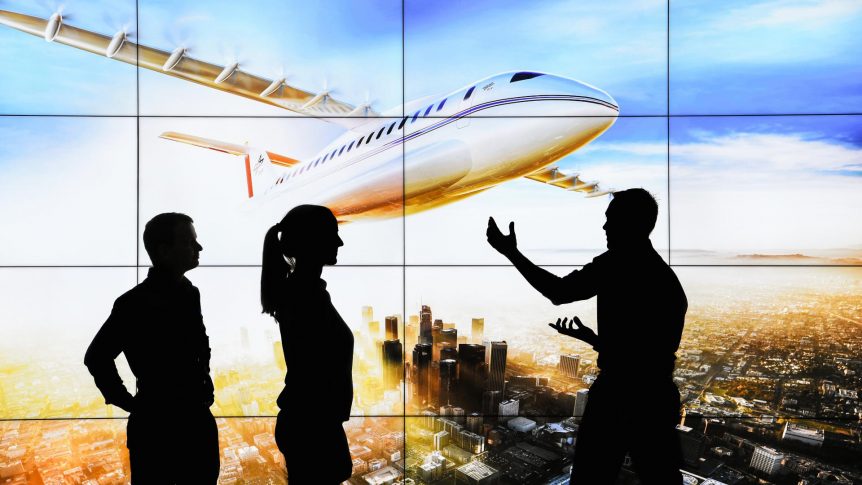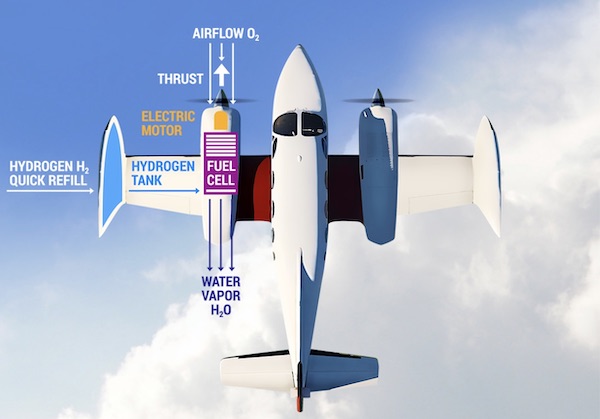ZeroAvia has taken delivery of a 76-seat Bombardier* Q400 airplane from Alaska Airlines. The craft could become a test bed for ZeroAvia’s modular HyperCore motors and hydrogen fuel systems. The Q400 will carry four times the number of passengers of the company’s current Dornier 228 twin-engine test aircraft – already having made five successful test flights. ZeroAvia proclaims, “The future of flight is renewable hydrogen,” and explains with a mission statement. “From 20 seat regional trips to over 100 seat long-distance flights, ZeroAvia enables scalable, sustainable aviation by replacing conventional engines with hydrogen-electric powertrains.” Two Dorniers, one in the United Kingdom and one in Hollister, California, are undergoing test flights (five so far in the Cotswolds in England) or awaiting FAA approval for such flights in Hollister. Acquiring the Bombardier brought a lot of attention to the Everett, Washington area recently, where ZeroAvia has a development center. Governor Jay Inslee came to inspect the project Q400 and prophecy about an increasingly …
Sonex and Gabriel DeVault Partner on Electric Kitplane
Sonex and Gabriel DeVault have partnered to create an electric kitplane, marketing components for a different type of powerplant. Sonex has been in the kitplane business since 1998 (having built from a decade’s-old earlier company) and Gabriel DeVault has been working with the electrification of aircraft for a decade. Combining their expertise, we have a kit built path toward an inexpensive electric kitplane. Gabriel commutes a lot by air, traversing the globe between his home in Watsonville, California and Cranfield, England for work on Zero Avia’s electrification of Dornier 228s – one in each country. He flies between Watsonville and Hollister, California in his Zero Motorcycle powered eXenos, a kit built product from Sonex Aircraft in Oshkosh, Wisconsin. Before that, he flew a Mark Beierle eGull powered with a Zero motor. Gabriel was instrumental in the design and manufacturing of that motor, making him a bona fide expert on the powerplant. His experience with the eXenos has led Sonex to …
ZeroAvia Comes to the Pacific Northwest
In the Everett (Washington) Herald Janice Podsada reports, “ZeroAvia, which currently has offices in London and in Hollister, California, plans to invest $5.5 million to ready an Everett site for a team of 20 design and software engineers.” This will be a new entry in Snohomish County, a location already supporting over 500 aerospace companies. Everett, site for Boeing Aircraft’s huge production facility, is also home to MagniX, poised to power aircraft such as Eviation’s Alice, currently preparing for test flights in Arlington, about 18 miles north. ZeroAvia will accept, “A $350,000 grant to convert a warehouse at the Snohomish County-owned airport into a research-and-development facility.” Val Miftakhov, ZeroAvia’s founder, explained the importance of the state’s Department of Commerce grant. “Given the age of the facility we will be occupying, this grant closed a gap related to facility construction and we are excited to engage in this community.” A hub of the Northwest’s center for aircraft development, Paine Field is also …
ZeroAvia, Mitsubishi, and Alaska Airlines Power Up
A Different Type of Kitplane Green Aeronautics are moving beyond small beginnings into grander realms through ZeroAvia, Mitsubishi, and Alaska Airlines. Gabriel DeVault has flown two different electric airplanes of his own, a converted EarthStar Thundergull and a Sonex eXenos (which seems to be his daily commuter between Hollister, California and his home in Watsonville). Both have been featured prominently in his YouTube channel and your editor has written about them for Kitplanes magazine. Now, Gabriel is working on a different type of Kitplane at a much large scale. Gabriel managed research and design for the motor and related systems on the Zero electric motorcycle. The original unit has gone through several upgrades, and is now seen in variants from 27 to 110 horsepower. The company sold over 4,000 units last year in 30 countries including the United States. They look to build at an accelerated rate, hoping to double sales every year. He has taken that expertise to larger …
Going Big and Bigger with Hydrogen
Two companies promoting hydrogen power for aircraft are upsizing their aspirations, with aircraft hauling four to up to 40 passengers. Both have ambitious timelines. ZeroAvia, operating in Hollister, California and Cirencester, England has been flying a Piper Malibu demonstrator, but anticipates flying a 10 to 20 passenger Dornier by 2024. It would expand that to a 50-passenger craft by 2026. H2Fly in Germany has been flying their Pipistrel-designed HY4 for several years and through six generations. The firm looks forward to taking incremental steps toward a 40-passenger regional airliner by 2030. ZeroAvia ZeroAvia reports on troubling trends in aviation’s contribution to greenhouse gases, but follows with a possible solution. According to their web site, aviation accounts for over 12 percent of total transportation emissions, and may double that by 2050. High altitude contrails mean aviation emissions have two to four times the effect of ground source emissions. Regulators want drastic changes. The European Union mandates a one quarter the CO2 …
DLR’s Future Visions
One Size Does Not Fit All DLR (Deutsches Zentrum für Luft- und Raumfahrt or German Aerospace Center) and the German Aerospace Industries Association (Bundesverband der Deutschen Luft- und Raumfahrtindustrie; BDLI) present future visions of electric aircraft. These range from a four-seat hydrogen-powered repurposed Pipistrel that nine years ago won the NASA Green Flight Challenge to large, multiple propeller, medium-range airliners. Their White Paper, “Zero Emission Aviation – Emissionsfreies Fliegen” (unfortunately available only in German) promotes the promise of “energy transition in air transport, with the goal of zero emissions,” and claims this is “possible by mid-century but requires a considerable increase in innovation.” Rolf Henke, the member of the DLR Executive Board responsible for aeronautics research and technology, explains, “The time has come to start a new chapter in aviation. Our white paper shows the path to emission-free flying for the ‘Green Deal’ in aviation, which will lead to new technologies, attractive high-tech jobs, fascinating products and the promotion of …
ZeroAvia First Out of the Gate with Hydrogen Flight
An Historic Hydrogen Outing While Airbus and MagniX promote the near- and not-so-near virtues of hydrogen-powered flight, ZeroAvia has demonstrated such flight with the largest H2-powered aircraft so far. Their Cranfield, England-based Piper Malibu flew on H2 power for the first time September 24 on an eight-minute circuit. The blue Malibu reached 1,000 feet and a top speed of 100 knots true air speed. Quick to capitalize on the successful mission, , ZeroAvia founder and CEO Val Miftakhov held a press conference the next day. In it, he explained his team,“has had discussions with seven aircraft manufacturers about possible retrofit and new-build applications for the propulsion system. He said the company has signed letters of intent with 10 airlines that have expressed an interest in the program based on presentations made to around 30 different prospective operators.” Earlier flights in Hollister, California and Cranfield were battery powered “to evaluate different elements of the powertrain.” Unspecified modifications helped prepare the craft …

